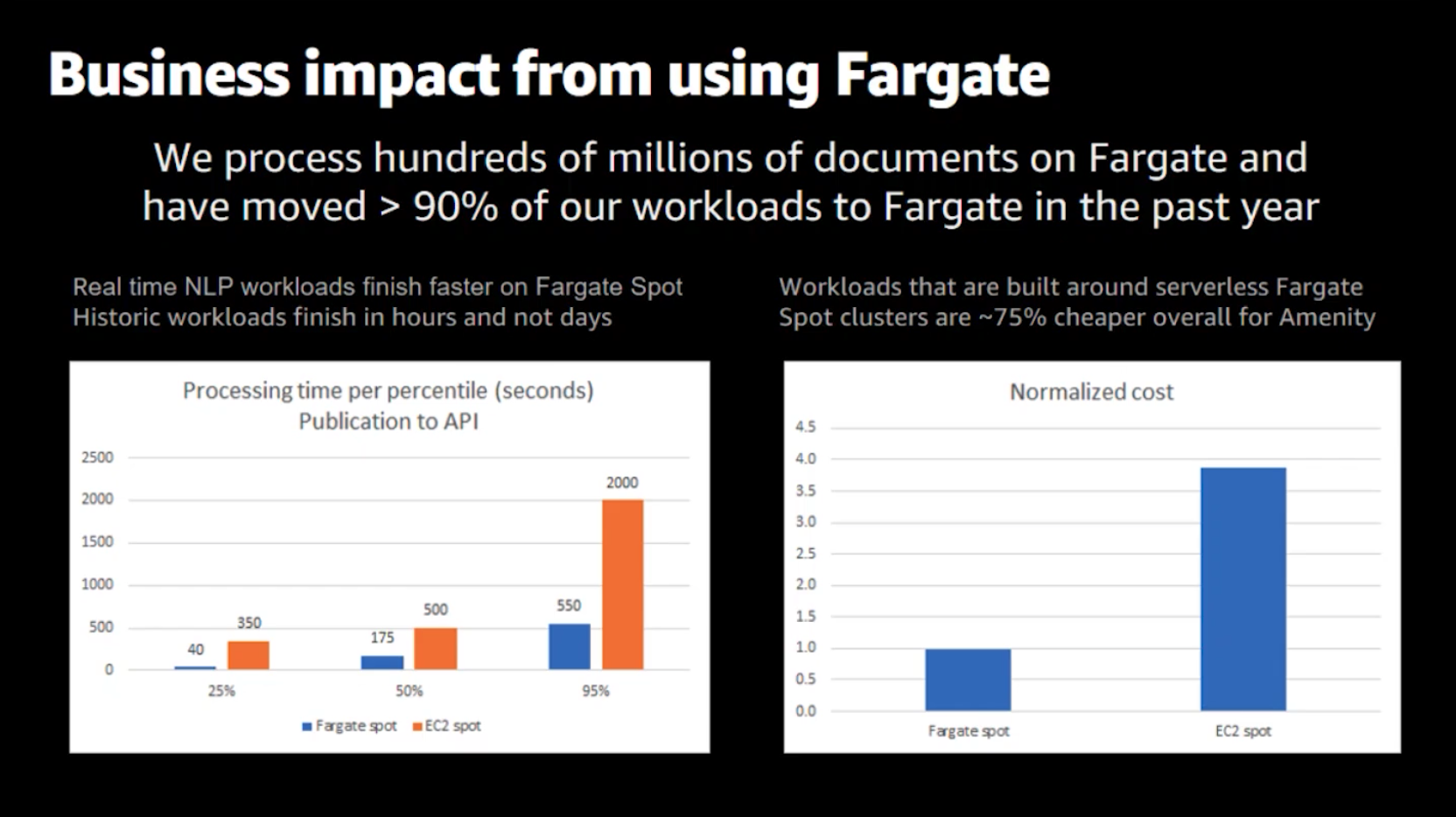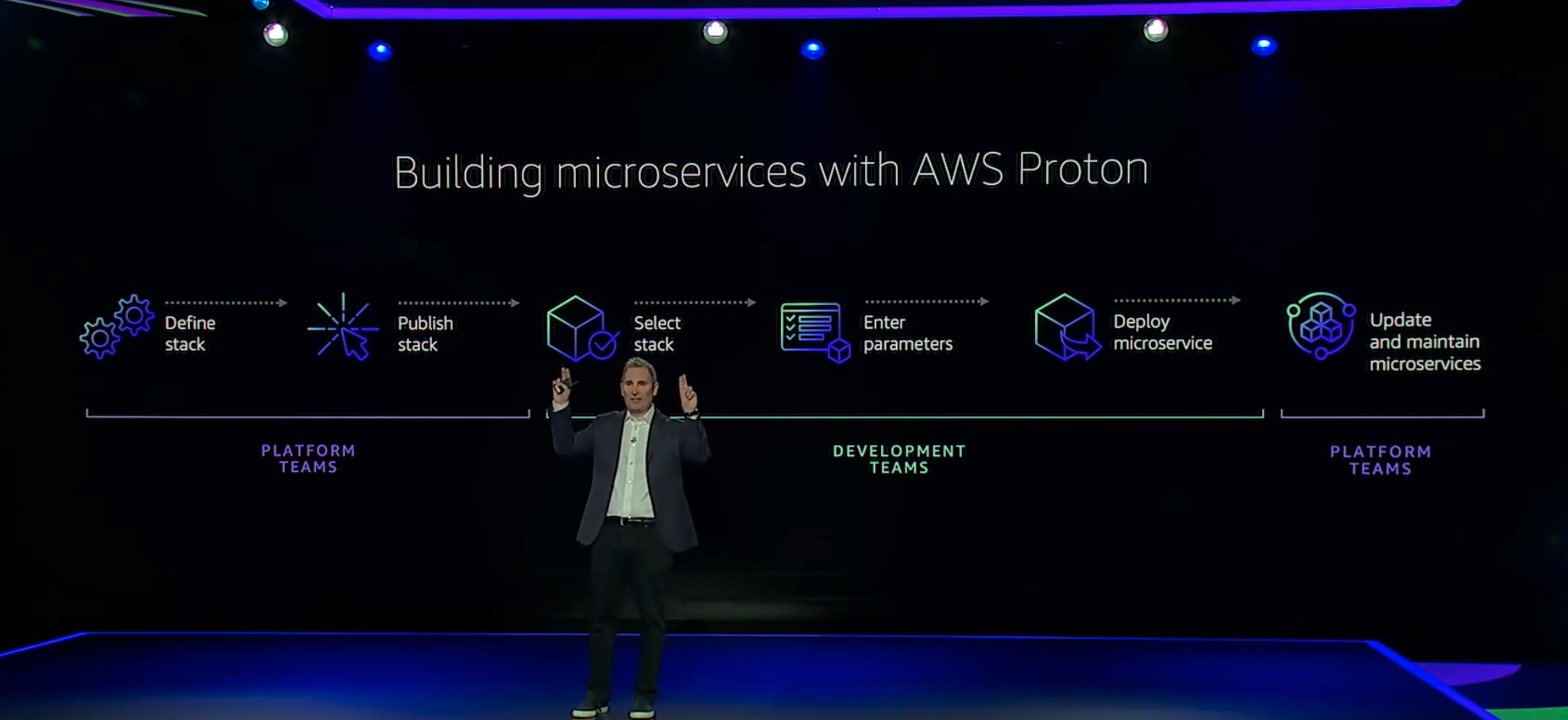Managed Services Drive Business Impact, but Infrastructure isn’t Disappearing Overnight
And Enterprise IT gets to figure it all out …

For decades organizations have struggled to balance developer speed and enterprise governance. This evergreen tension was a central theme at AWS re:Invent this week—just with updated, modern details (think containers, serverless, and even air gapped edge computing!).
In this post I highlight three conversations from this week that revolve around increasing speed and business impact, and how to start to modernize traditional processes.
- Modern applications that blend containers, serverless, and managed services are the future (they make development faster and easier, and give teams more operational control).
- Managed services = focus on customer value and business impact, rather than commodity infrastructure.
- Infrastructure management isn’t disappearing overnight … and there’s an opportunity hidden here that the best companies will take advantage of.
Natalia Girolamo, Technical Program Manager at AWS, highlighted the common theme of governance & agility. Source: Getting enterprises in the cloud: Cloud management with AWS
Modern applications that blend containers, serverless, and managed services are the future (they make development faster and easier, and give teams more operational control).
The most progressive orgs are already building apps that use the best of serverless, containers, and their own technology. Why? It allows them to get the best of the cloud (think scale, and security) but still integrate proprietary (often legacy) technology. For example, one of our healthcare customers provides a modern integration experience across older but pervasive healthcare tech. They do this by wrapping burst-able event-driven serverless infrastructure around long-lived VPN tunnels. This allows them to connect data from a source they don’t control or define to a destination they don’t control or define, and do it securely and cheaply. The end result is a mix of AWS ECS Fargate and Network Load Balancers for non-HTTP endpoint termination that feeds into a completely serverless ETL backend.
This modern hybrid application combines customer-owned components (new and legacy), managed service offerings (e.g., functions, API gateways, queues, tables, object stores, etc.), and SaaS offerings. And one of the ways this shows up technically is you see more-and-more around serverless + containers. You don’t have to look farther than Andy Jassy’s keynote to see a few examples:
- Jassy highlighted the importance of Fargate, a container-based managed service.
- He announced AWS’s new ability to package Lambda Functions like you do containers.
- Finally, he introduced AWS Proton, which starts to provide a more cohesive experience as cloud teams deliver modern infrastructure for containers and serverless.
Regardless of how exciting the technology is, what’s most important is why it matters. Leveraging a mix of serverless + containers in modern applications allows teams to move fast, build applications that can include critical legacy services, and provide more operational control for teams building and delivering applications. After all, when you build serverlessly, infrastructure-as-code is a requirement—not simply a best practice. This affords all sorts of fine-grained security and operational control.
Managed services = focus on customer value and business impact, rather than commodity infrastructure.
My favorite part of the week so far was hearing from organizations like LEGO, Carrier, Silicon Valley Bank, Goldman Sachs and more. The premium they all place on delivering customer value and making an impact is wonderfully apparent.
Maira Farrugia, Head of Digital Architecture at Vodafone UK represents this idea clearly when she says, "By removing the complexity of infrastructure management and shifting some responsibilities, like OS hardening and patching, onto AWS [Fargate], we can reduce the amount of resources we spend on these tasks and instead focus on adding value to our Vodafone customers."
Check out the rest of Saloni Sonpal’s talk AWS Fargate: Are serverless containers right for you? for more details.
Every single company I spoke with since last year’s re:Invent is doing something around serverless and managed services. It may not be pervasive yet, but it’s apparent that it accelerates delivering customer value while wasting zero resources on unnecessary infrastructure complexity.
Roy Penn, VP of Engineering at Amenity Analytics shows how Fargate (AWS's container-based managed service) drives value for them. Source: AWS Fargate: Are serverless containers right for you?
Infrastructure management isn’t disappearing overnight … and there’s an opportunity hidden here there for the best companies to advantage of.
For as much as I love seeing the power of serverless and managed services empower enterprises, I’m under no illusions. Most enterprises have been successful with managed services in pockets and isolation—but that success is by no means pervasive across the entire organization.
For all the talk of DevOps over the past years, Dev and Ops are largely separate. Central IT and operational teams have rich and long-standing experience in making sure mission critical infrastructure and applications are available, secure, and performing. Their success has also yielded a momentum that will be difficult to change rapidly—even for the most committed and willing enterprises.
That’s why I was excited to see AWS announce the preview of Proton. It’s aimed at the centralized teams (commonly called Cloud Centers of Excellence, Cloud Platform Teams, Platform Delivery Teams, etc.), and allows them to take well-understood and proven infrastructure development and provisioning practices, and apply them to modern technology like containers and serverless.
Source: Andy Jassy, CEO of Amazon Web Services. re:Invent 2020 Keynote
Common criticisms I’ve heard upon the announcement of Proton poked at how it applies a traditional approach to new technology and only perpetuates bottlenecks and fractured development and ops teams. Though there is truth in that, there is power in that approach. By talking familiar and acceptable practices—think VMware’s vRealize blueprinting and self-service provisioning, but for containers and serverless—it gives centralized IT teams a way to embrace and support new technologies and developer autonomy, while working within well-understood provisioning and delivery models. Proton appears to be a pretty raw preview still. It's also very ops- and infrastructure-focused, leaving plenty of gaps to fill on the modern application development front. However, once it's ready for primetime, I think it will be a powerful stepping stone for enterprises steeped in traditional administrative processes to safely move to the future of application development and delivery.
What did you make of this year's announcements and the tidal change related to serverless and DevOps? Join me and the Stackery team for our TwitterChat on Dec 16 at 2 pm PST. And follow the rest of the team as they analyze re:Invent at our re:Invent hub.
Related posts


Getting the developer and operator workflows right is a key success factor in the next wave of cloud adoption and innovation

Enabling Serverless in the Enterprise



